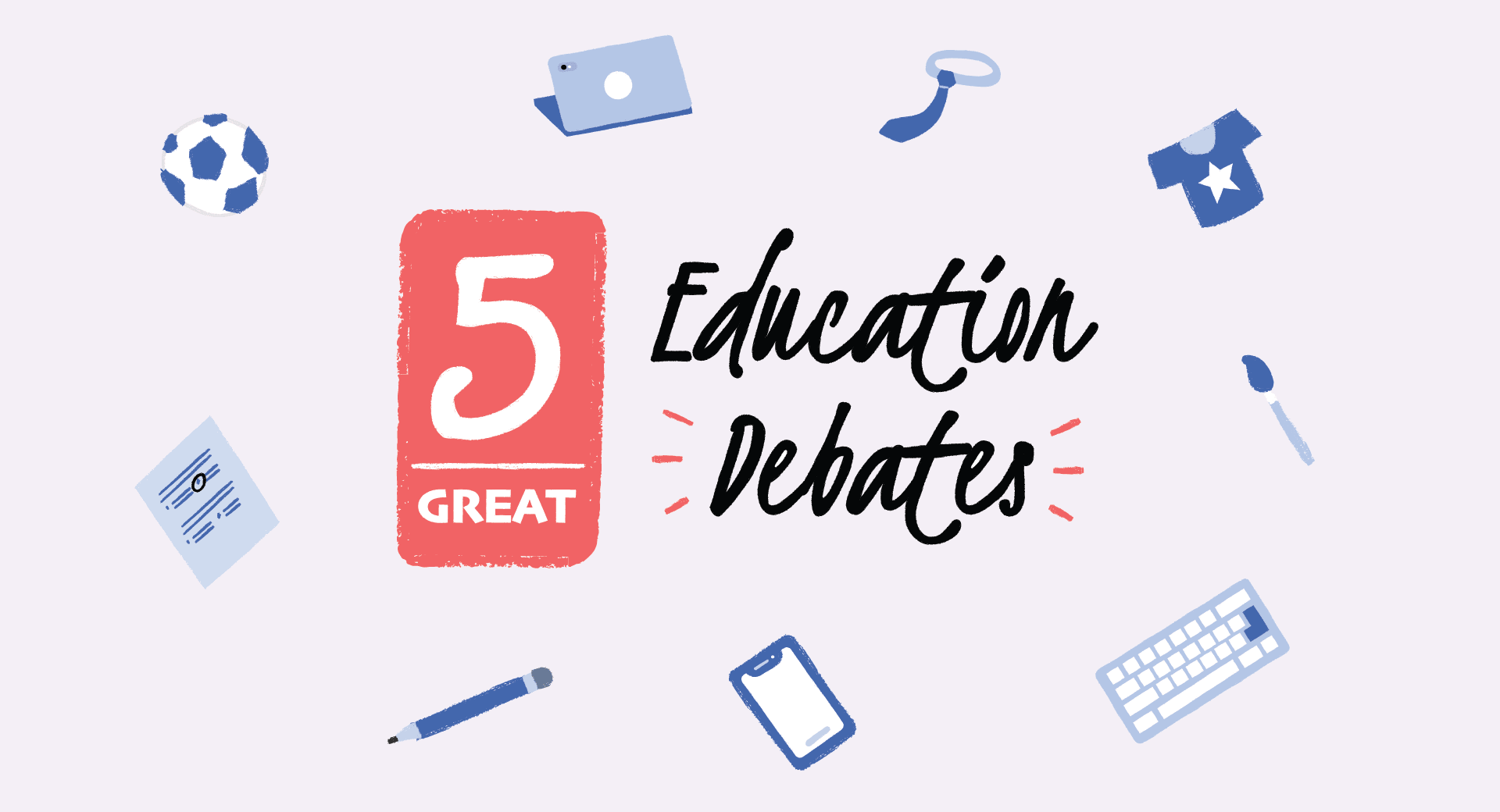
Education has been saddled with dozens of perennial debates, ranging from public vs. private schools to scheduling to questions about students’ daily routines and behavior. Let’s explore a small sample of these debates without picking a side, to better understand the concerns involved.
1. Should kids use cell phones in school?
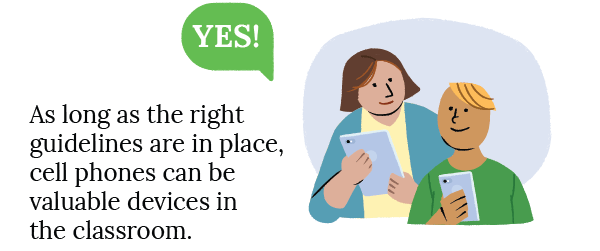
Yes: Some regulation is required, of course, but cell phones can serve as important tools for learning. Between practice apps, grade checking, and augmented reality, cell phones offer many legitimate uses for students.
In addition, cell phones can take the place of pricier devices in BYOD programs. Research shows 95% of students have access to a mobile phone, while computer access can vary depending on household income. 75% of students from low income households (earning less than $30,000 annually) have access to a computer, compared to 96% of their peers from higher income brackets. By designing mobile-friendly assignments, we increase equity for students from low-income families. This approach can also give students experience with a flexible workplace, which they may encounter in future careers.
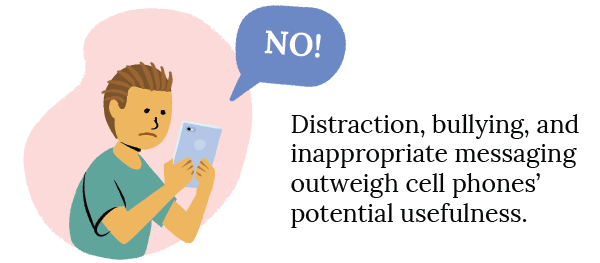
No: Cell phones are a gateway for distraction, social media addiction, and cyberbullying. A 2018 survey from the Pew Research Center found 45% of teens are online “almost constantly,” nearly twice as many as in previous studies from 2015. Teens have mixed views of social media use (inextricable from discussions about mobile devices), with about 24% of teens reporting they have a mostly negative view of social media use.
Classroom management for larger class sizes is difficult enough—imagine twice as much distraction from student devices, not to mention the possibilities for cheating. The more time devoted to managing student devices, the less time there is left for teaching, collaboration, and learning.
2. Should schools require uniforms?
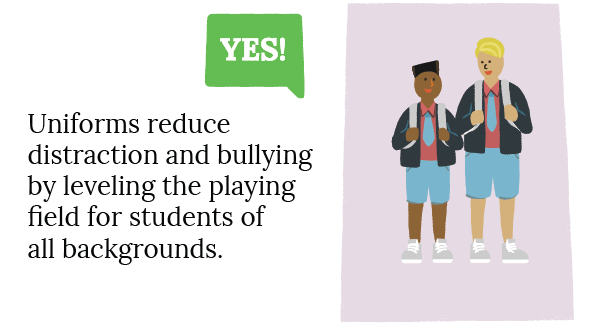
Yes: Equity matters in school, yet income inequality is becoming more pronounced. Uniforms provide a baseline for student attire, eliminating flashy or inappropriate clothing. Less distraction from comparing clothing means more focus on learning and may lead to a safer environment.
On the administrative side, the less time schools spend identifying, tracking, and enforcing dress code violations, the better. For parents, a NAESP survey found 86% of parents preferred uniforms because they were more cost effective, made morning routines more manageable, and made back-to-school shopping easier.

No: In some situations, uniforms didn’t save families money. If a specific style is required, they can even be more expensive than typical clothing or more challenging to purchase secondhand. Despite best intentions, students may fixate on other ways to display inequality. And uniforms often rely on outmoded, binary gender models.
Over the decades, students have protested dress code requirements for various reasons. In 1969, a 13-year-old student won the right to wear a black armband to protest the Vietnam war. This led to similar objections over sexist hemline requirements, instead securing female students the right to wear pants. Why backtrack, especially when it was students who led these crusades in the first place?
3. Is homework beneficial?
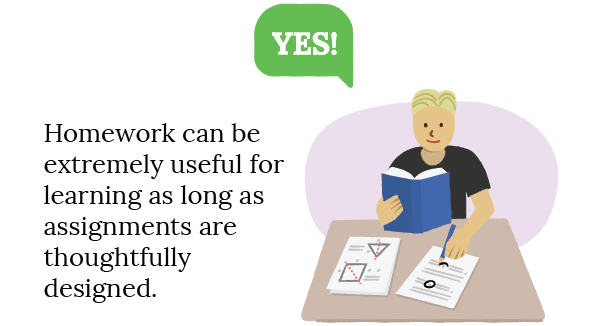
Yes: Homework provides an opportunity for students to learn outside the classroom, solidify the day’s knowledge, and make a hands-on attempt. In flipped classrooms, homework can consist of a simple video lecture while assignments are completed in the classroom where teachers are free to assist students as needed.
Instead of nixing homework based on perception, we instead need to ensure homework is based on providing valuable practice. The quality of assignments needs to be weighed carefully against the time required to complete them to ensure we’re adding value, instead of requiring busywork at home.
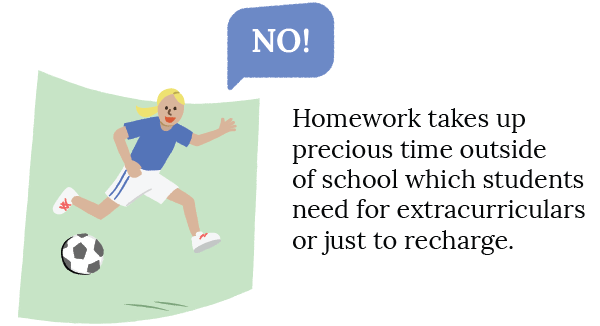
No: Students spend so much time in school, extracurriculars, or part time jobs they often have time for little else. Physical activity, play, and family bonding trump the need for completing what can sometimes seem like busy work. Reading may serve as an exception, but it shouldn’t be assigned like homework—for best results, encourage reading self-selected books as a fun pastime.
Though conventional wisdom says homework should be capped at two hours per day, surveys revealed teachers may assign up to 3.5 hours of homework per week. When multiple classes are factored in, this adds up to nearly 18 hours of homework per week for a high school student—basically equivalent to a part-time job.
4. Is cursive important?
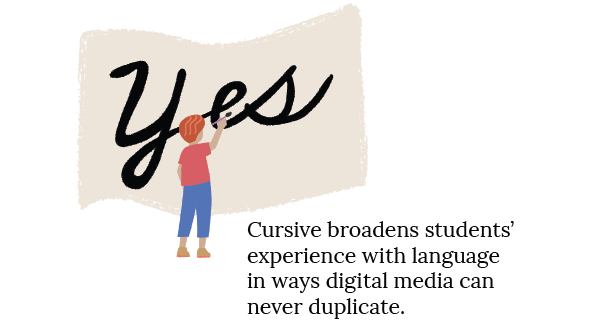
Yes: The digital age seems to trick people into thinking working with your hands is so outdated, it’s impossible. It’s crucial to preserve skills like handwriting, not only so students can perform the task but also understand the written word better. Students should be able to sign their names, write a greeting card, and even explore some of the artistic sides of writing. Illinois schools require students to learn cursive to sign their names and read historical documents.
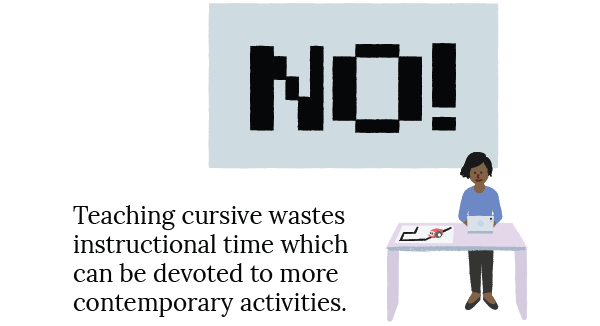
No: Teaching and learning cursive is a waste of instructional time and effort. Most of the reading students will do will occur on screens or in printed books. Most students will not have an opportunity to use it or will choose to communicate in a different way. Cursive is at best an optional, extra skill which requires precious time to teach—time which could be devoted to any number of enrichment activities, including the arts, STEM, and physical education.
5. Is there a technology overload in schools?
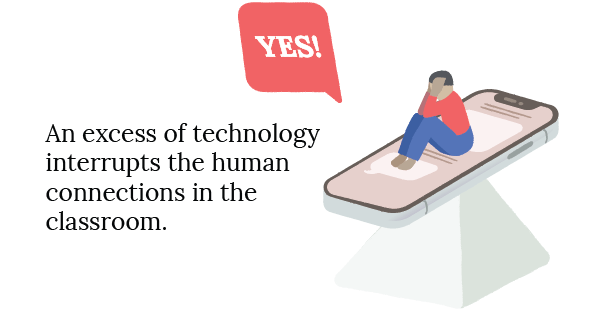
Yes: When the focus is on technology, the important work of learning interpersonal communication (so-called soft skills) is shoved to the side. It can be difficult to determine whether the skills and concepts are engaging students, or the latest shiny gadget has captured their attention.
Further, education cannot be automated. An increasing reliance on technology only moves us closer to the false narrative of creating artificial stand-ins for teachers, sometimes in the name of personalizing instruction. True personalization comes from the human connections between students and their teachers.
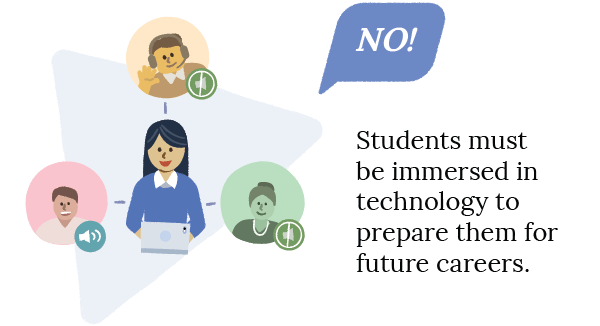
No: Most students today will never again live in a low-tech world, so why should their education be low-tech? Electronic materials can be updated to add or clarify information, saving a fortune on textbooks. Plus, these digital natives are accustomed to finding information online using various devices—some even from toddlerhood. Schools can use this natural interest to meet students where they already are.
Technology isn’t strictly about the internet, either. STEM extends far beyond screens, and even the youngest students are getting involved. Students who are pursuing a trade benefit from access to the technology advancing their field of choice.
Many of these debates lack a definitive right answer. School leaders must decide what’s best based on their existing culture, their community’s priorities, and their goals for student growth.

Follow-up resource: More big-idea infographics
7 News Literacy Strategies for All AgesThe Top 10 Literacies in Education Today
WHAT'S NEXT FOR YOUR EDTECH? The right combo of tools & support retains staff and serves students better. We'd love to help. Visit skyward.com/get-started to learn more.

|
Erin Werra Blogger, Researcher, and Edvocate |
Erin Werra is a content writer and strategist at Skyward’s Advancing K12 blog. Her writing about K12 edtech, data, security, social-emotional learning, and leadership has appeared in THE Journal, District Administration, eSchool News, and more. She enjoys puzzling over details to make K12 edtech info accessible for all. Outside of edtech, she’s waxing poetic about motherhood, personality traits, and self-growth.




